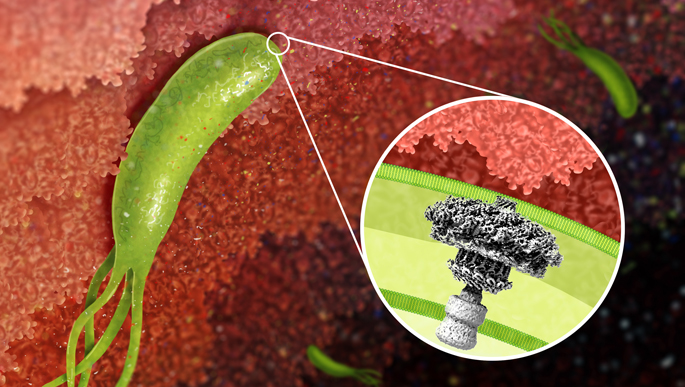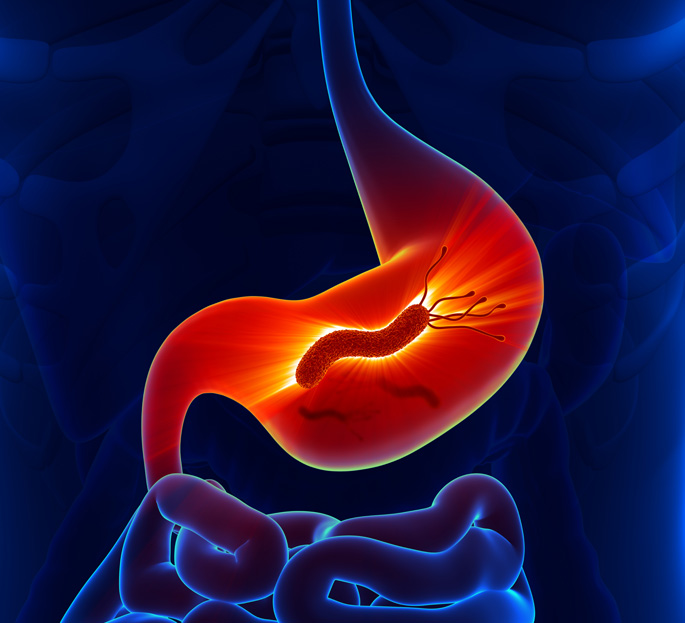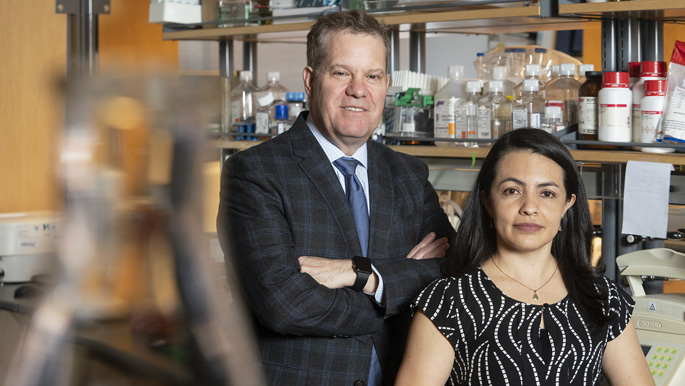
Researchers at Vanderbilt University and the University of Michigan in Ann Arbor have obtained the first high-resolution image of a molecular “machine” used by the insidious stomach bug Helicobacter pylori (H. pylori) to inject a cancer-causing protein into the stomach lining.
Their report published recently in the journal eLife provides new insights into mechanisms by which H. pylori can trigger the development of cancer.
In addition, “this study helps us understand why some H. pylori strains are more likely to cause gastric cancer than other strains,” said Timothy Cover, MD, professor of Medicine and of Pathology, Microbiology and Immunology in the Vanderbilt University School of Medicine.
Cover said his lab’s research was a “wonderful collaborative project” conducted in conjunction with the labs of D. Borden Lacy, PhD, the Edward and Nancy Fody Professor of Pathology at Vanderbilt, and Melanie Ohi, PhD, a former Vanderbilt faculty member now at the University of Michigan Life Sciences Institute.
Bacterial pathogens have evolved elaborate strategies to infect their hosts. Some strains of H. pylori, for example, contain a large chromosomal region known as a “pathogenicity island” that encodes the bacterial oncoprotein CagA as well as components of an elaborate transmembrane complex known as a type IV secretion system.
This mushroom-like molecular machine is required to inject CagA into stomach cells and is an important step in the development of gastric cancer.
People who are infected by CagA-injecting H. pylori strains are more likely to develop gastric cancer or peptic ulcer disease than are people infected by other H. pylori strains that don’t have a pathogenicity island and therefore can’t produce the “CagA injector.”
To visualize the secretion system, the researchers used single particle cryo-electron microscopy, a technique performed at cryogenic temperatures (below minus 238 degrees Fahrenheit). The technique bounces electrons off proteins that have been flash-frozen in vitreous ice (without crystals) to obtain high-resolution images of their natural shape and form.
What emerged was a large, mushroom-shaped structure — one of the largest bacterial secretion systems ever described. The discovery opens the door for future studies to determine how the pieces of the “injector” fit together and function.
Since type IV secretion systems are produced by many bacterial species, including those that are not pathogenic to humans, “the results of this study will eventually help us understand how these systems carry out a wide range of different functions,” Cover said.
Jeong Min Chung, PhD, a research fellow in Ohi’s lab, and Michael Sheedlo, PhD, research fellow in the Lacy lab, were the paper’s co-first authors. The research was supported in part by the U.S. Department of Veterans Affairs and by National Institutes of Health grants AI118932, CA116087 and GM103310.















